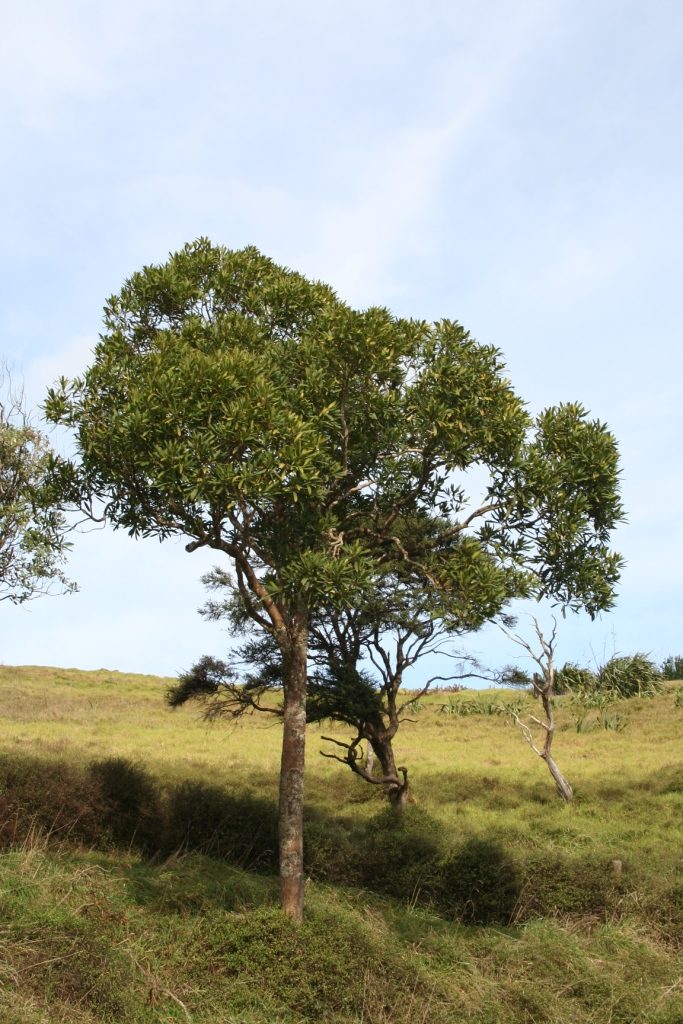Collecting the seeds of our native trees is the best way that I have
found to get to know those trees. I have been collecting seeds and
propagating native plants for the past few decades. It has been a
fascinating pastime and I have learned so much. Not just about the
individual native trees, shrubs and other plants but how they fit
together to make a forest or wetland. I plan to share those
experiences so that others can apply the lessons I have learned and
we will all be the richer for it.
 The fruit of lancewood ripen late winter but don’t really change colour much
The fruit of lancewood ripen late winter but don’t really change colour muchThere is no opening day of seed collection season. Any tree which produces seed when there is little else around has a monopoly on the birds for dispersing their seeds. Last month I began with lancewood / horoeka (Pseudopanax crassifolius) just because in late winter it is one of the few native trees with ripe fruit. This has been a fantastic year for fruit on lancewood. Last year I visited the same place and couldn’t tell which were male and which were female trees. There was no fruit on any of them. This year, trees were full of fruit and the native kereru pigeons were full as well, or at least making an honest attempt to be.
 The really distinctive foliage of lancewood juveniles growing on a ridge
The really distinctive foliage of lancewood juveniles growing on a ridgeI found plenty of these unusual looking trees along the bush edge at the top of a farm on the lower slopes of Mount Pirongia. I often come across lancewood on dry ridges with shallow soil but also remarkably in wetlands as well. So, I guess lancewood really needs plenty of sunlight and isn’t too fussy about how rich the soil is. Lancewood grows across the whole country and to quite high altitudes so must be quite resistant to frost.
 At about ten years the juveniles begin to change form to this more common small tree shape
At about ten years the juveniles begin to change form to this more common small tree shape